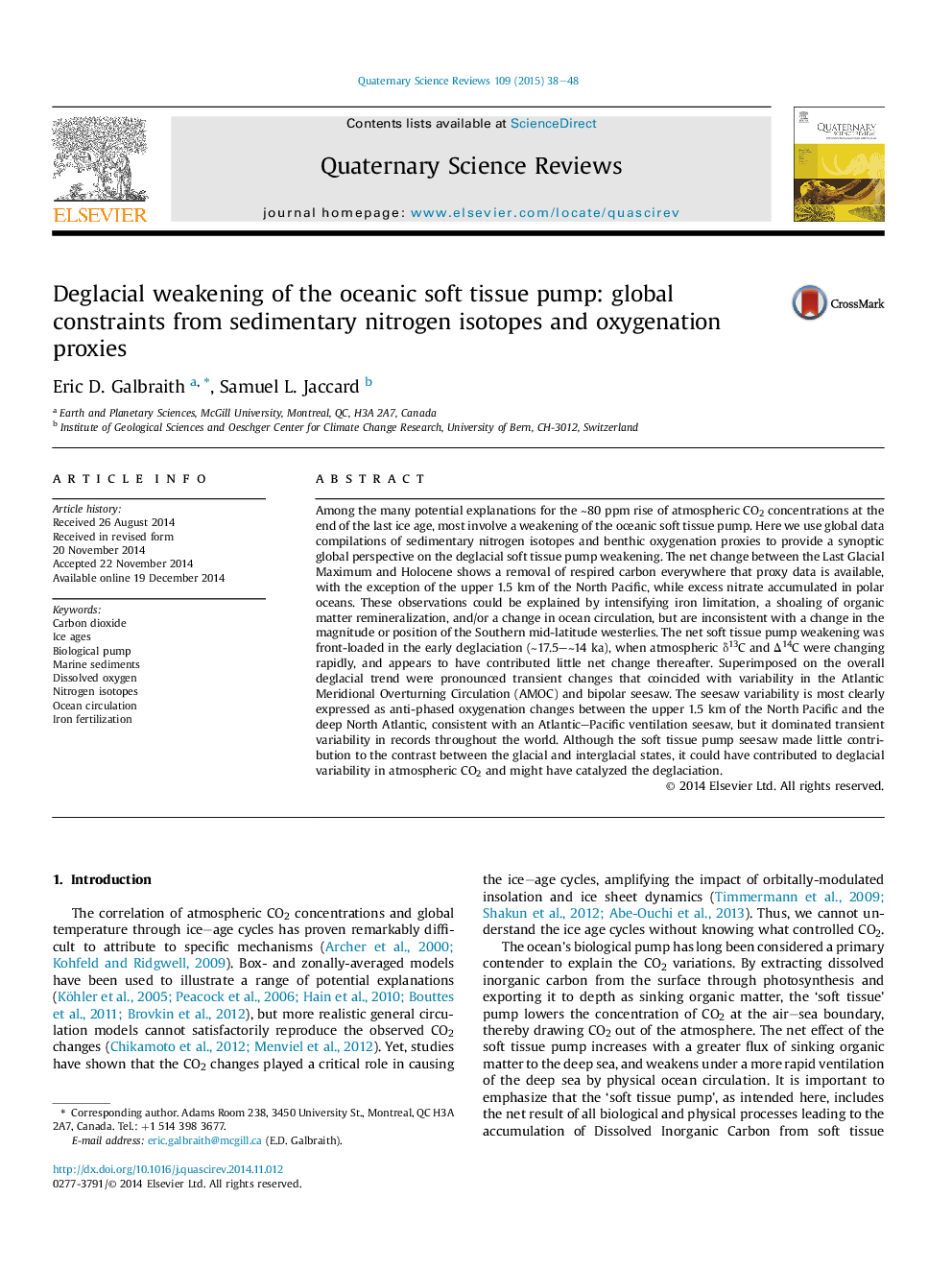| Article ID | Journal | Published Year | Pages | File Type |
|---|---|---|---|---|
| 4735937 | Quaternary Science Reviews | 2015 | 11 Pages |
•A principle component analysis is carried out on 119 deglacial sediment records.•The overall deglacial trend shows a significant weakening of the soft tissue pump.•Net weakening of the soft tissue pump was focused in the early deglaciation, before 14 ka.•Consistent with expected patterns for dust, ecosystem and circulation, but not westerlies.•Transient soft tissue pump fluctuations, correlated with the AMOC, had no net CO2 effect.
Among the many potential explanations for the ∼80 ppm rise of atmospheric CO2 concentrations at the end of the last ice age, most involve a weakening of the oceanic soft tissue pump. Here we use global data compilations of sedimentary nitrogen isotopes and benthic oxygenation proxies to provide a synoptic global perspective on the deglacial soft tissue pump weakening. The net change between the Last Glacial Maximum and Holocene shows a removal of respired carbon everywhere that proxy data is available, with the exception of the upper 1.5 km of the North Pacific, while excess nitrate accumulated in polar oceans. These observations could be explained by intensifying iron limitation, a shoaling of organic matter remineralization, and/or a change in ocean circulation, but are inconsistent with a change in the magnitude or position of the Southern mid-latitude westerlies. The net soft tissue pump weakening was front-loaded in the early deglaciation (∼17.5–∼14 ka), when atmospheric δ13C and Δ14C were changing rapidly, and appears to have contributed little net change thereafter. Superimposed on the overall deglacial trend were pronounced transient changes that coincided with variability in the Atlantic Meridional Overturning Circulation (AMOC) and bipolar seesaw. The seesaw variability is most clearly expressed as anti-phased oxygenation changes between the upper 1.5 km of the North Pacific and the deep North Atlantic, consistent with an Atlantic–Pacific ventilation seesaw, but it dominated transient variability in records throughout the world. Although the soft tissue pump seesaw made little contribution to the contrast between the glacial and interglacial states, it could have contributed to deglacial variability in atmospheric CO2 and might have catalyzed the deglaciation.
Graphical abstractFigure optionsDownload full-size imageDownload as PowerPoint slide
